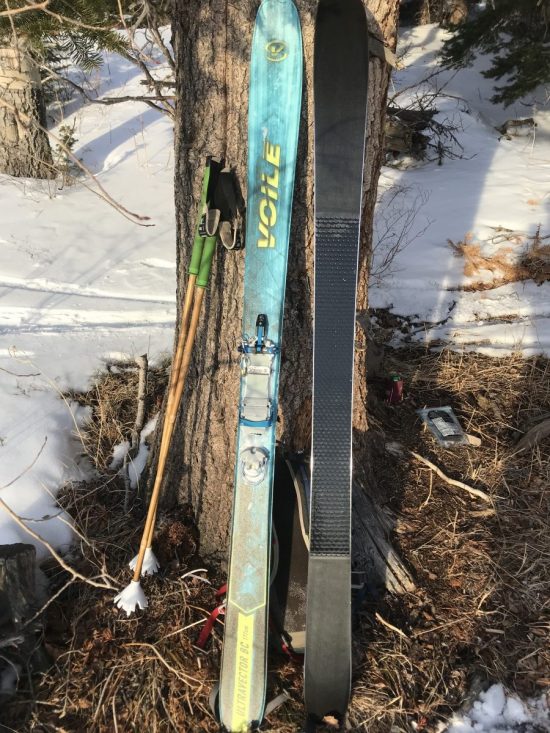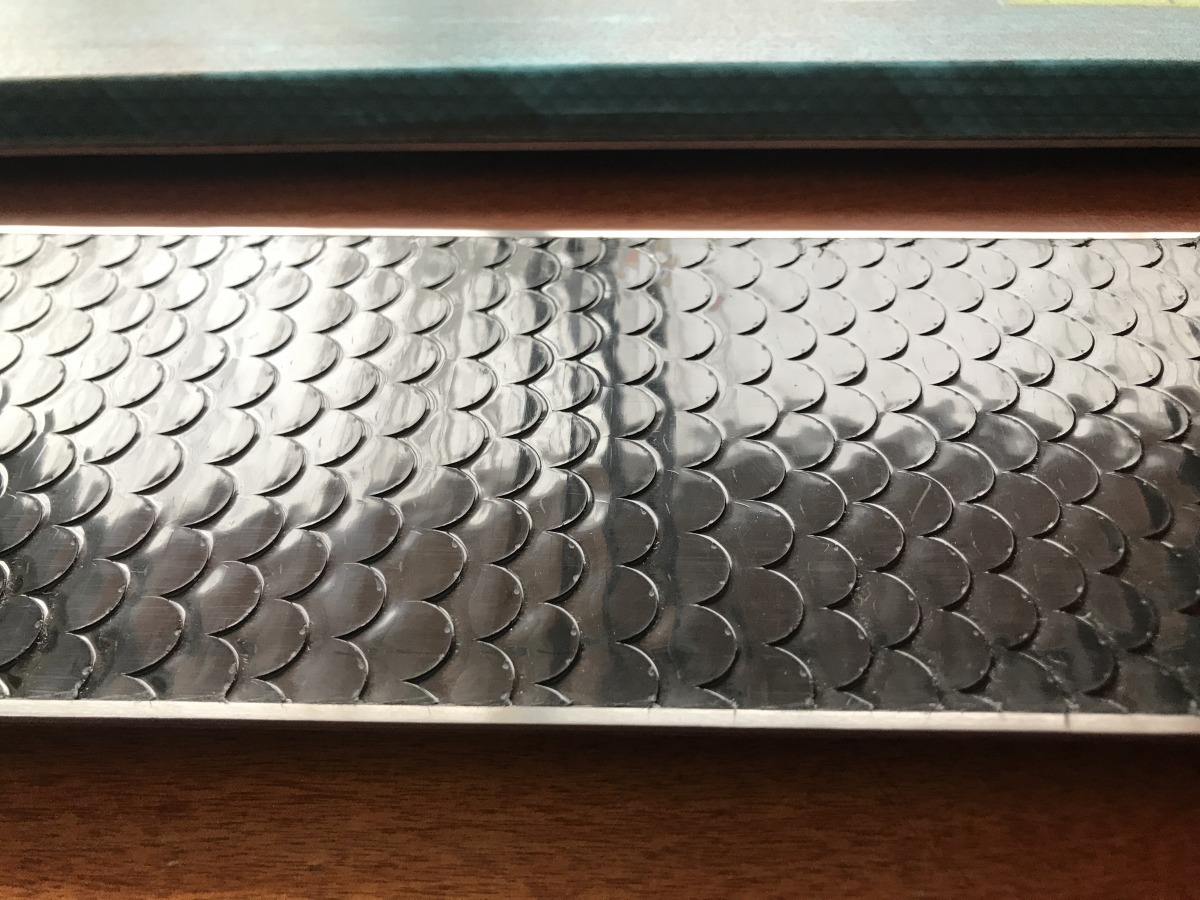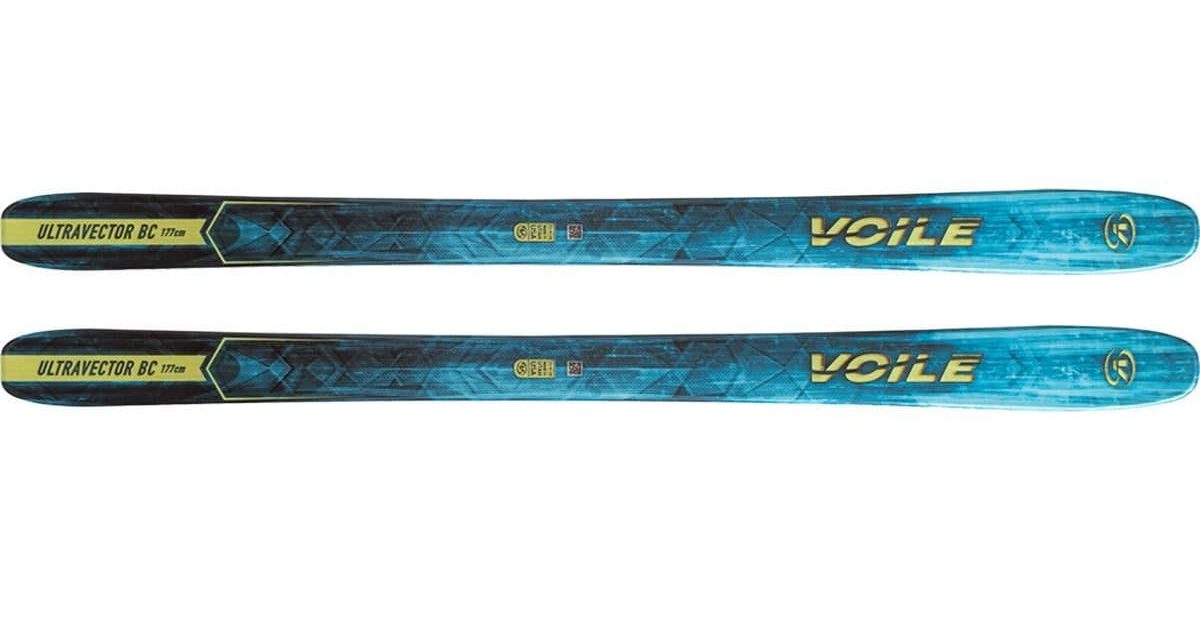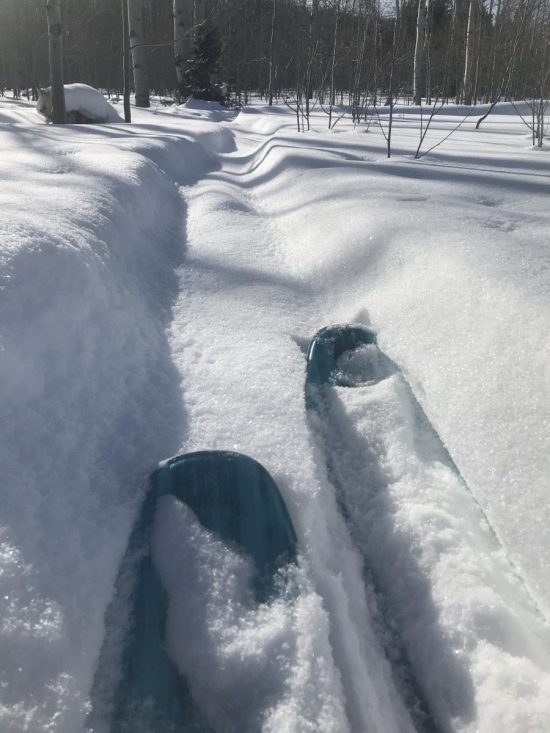Ski touring choices are often divided into a binary set choices; up, or down. Yet the observant adventurer cannot help but notice that this division overlooks a vast array of opportunity. Faced with a similarly limiting set of choices in Zen and the Art of Motorcycle Maintenance, Robert Pirsig introduces the Zen concept of Mu. Often translated as “no thing,” Pirsig offers a handier alternate of “unask the question.”
The fish scale climbing pattern of the Voile UltraVector BC offers a mu response to the “Up or Down?” dilemma of ski touring. It is ski that does not live for the glory of the powder shot, to race against the clock, or to huck cliffs. Rather, it is a ski that encourages “lateral thinking” and to view terrain choices through a broader lens. What it will do is give you a different way to experience skiing, and perhaps cause you to re-evaluate terrain or routes you previously considered too flat or boring.
The climbing pattern base has a long-running niche in the ski industry as an experiment that never really caught on widely, but never went away either. It’s not the sort of thing that lends itself to flashy photo shoots, or trendy marketing, but the staying power of this concept represents a “silent majority” of skiers outside the bounds of bro-dom or fitness freaks.
Overview
The UltraVector BC starts with a tried and true shape that has been a well-received profile in Voile’s line up for several years; a sort of Goldilocks of being not too progressive / wide, not too conservative / narrow. As my ski choices have trended towards wide, and wider, it was a refreshing change to ski something with a more “classic” design for days when conditions are less than blower. Considering these are the days that make up the majority of skiing opportunities, it was great to have something more exciting than snowshoeing, but less specific than massive powder sticks.

Low-angle, low tide exploration through brushy thickets capitalizes on the strengths of the Vector BC. When conditions are less than stellar, these skis open up options that would otherwise be impractical.
These same characteristics also make it a great resort ski, again helping to make the most of less-than stellar conditions. In this season’s “The Winter That Took Forever to Get Here,” these skis helped make the most of noodling around for low-angle lines.
Breaking down the scales
The burning question in my mind when I received these skis was “How steep will they go?” As with many things in life, the answer was “it depends.” Optimum conditions for the climbing pattern proved to be a packed skin track with an inch or so of fresh on top. Icy, packed routes were not friendly to the climbing pattern, as the scales had problems gripping the uneven, polished surface. Deep, fresh powder proved to be challenging as well, making for a steeper effective angle of attack while breaking trail. A small cushion of snow to compress against a packed layer proved to be the most ideal conditions.

Not the fish scales that you think. The Voile scale pattern works opposite of how I had expected when looking at online pictures. The “V” shape between the scallops generates climbing traction by forcing the snow to compact into a point.
I found my most reliable metric to be that the scales were effective up the point where I would begin to think about using risers. This ski rewards local knowledge, or at least an understanding of where the trail turns up. I soon discovered that pushing the scales to their limits in climbing generally resulted in flailing about on an awkward slope while trying to put on skins.
Though I had anticipated the scales to be a great asset in the approach, I found them most useful on rolling traverse descents. Being able to stride uphill to explore an alternate route (or aid a struggling partner) was a novelty I never tired of, and certainly encouraged me to explore routes I might have otherwise overlooked.
Drawbacks
The paradoxical drawback to the climbing pattern is that the same mellow angles it worked best in climbing were the ones it was most hampered by on descents. The extra drag of the scale pattern was enough to make low-angle exit routes something of a chore. Routes that I could carry a moderate amount of speed on regular skis were either significantly slower, or required double poling to keep from stalling out.
Final thoughts
The scale pattern felt liberating underfoot, making for a free-er, more “slippery” stride. I felt certain this would give me the sort of advantage that would force me to exercise humility while waiting for unenlightened skinning Neanderthals. But in the times I toured on scales while my partners were on skins, I did not notice any magical advantage, but rather found our pace was about the same. I attribute this to the fact that though the scale pattern had noticeably less drag than even my Contour Hybrid mohair skins, they did not grip the snow nearly as well, requiring me to pay much more attention to body positioning to make sure my skis did not slip out underneath me.
While this winter was a bit disappointing in snow pack in Western Colorado, the UltraVector BC whetted my appetite for more lateral low-angle exploring. If you are looking to explore terrain a bit more zesty than is appropriate for xc touring gear, or wonder what is just on the other side of the drainage you normally ski down, or live in an area where the terrain is more “rolling” than “rugged,” the UltraVector BC may be just the ticket to open up some routes you normally pass by.
SPECS
Available lengths (cm): 154, 164, 171, 177, 184
Mass (g): 1265 (177 cm)
Construction: Cap, carbon, Paulownia core
Profile: rockered tip and tail, camber underfoot
Dimensions (mm): 130, 96, 114 (171 cm)
Turning radius (m): 18.5
Shop for the Voile HyperVector BC ski
Aaron Mattix grew up in Kansas and wrote a report on snowboarding in seventh grade. His first time to attempt snowboarding was in 2012, and soon switched over to skis for backcountry exploration near his home in Rifle, CO. From snow covered alleys to steeps and low angle meadows, he loves it all. In the summer, he owns and operates Gumption Trail Works, building mountain bike singletrack and the occasional sweet jump.


